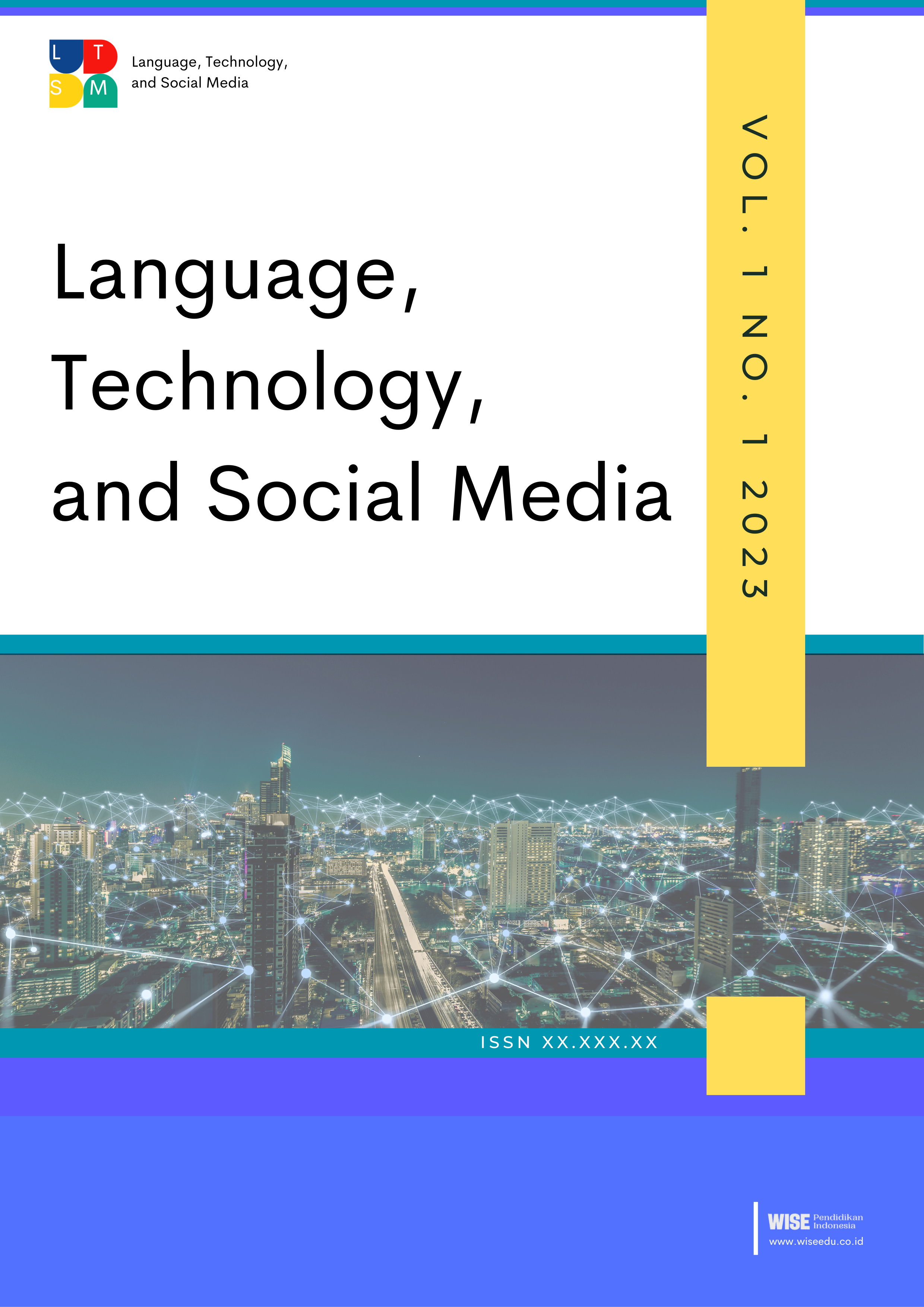The Impact of Social Media on Standard Indonesian Language Competency: A Comparative Analysis Across Age and Educational Levels
DOI:
https://doi.org/10.70211/ltsm.v1i2.50Keywords:
Social Media, Indonesian Language, Standard Language Norms, Language Shift, Digital Communication, Language DegradationAbstract
The rapid proliferation of social media has significantly influenced the use of the Indonesian language, particularly in the erosion of standard language norms. This study investigates the impact of social media on the usage of standard Indonesian across various age groups and educational levels. Using a mixed-methods approach, data were collected through content observation on popular platforms such as Instagram, Twitter, and Facebook, complemented by in-depth interviews and a comprehensive literature review. The findings reveal a notable shift towards informal language use, characterized by slang, acronyms, and loanwords from English, particularly among younger and less-educated users. This research identifies a negative correlation between the frequency of social media usage and adherence to standard language rules, with significant variations observed across different demographics. The study also proposes strategic interventions, such as digital literacy programs, to preserve and promote the use of standard Indonesian in the digital era. These insights contribute to understanding the evolving dynamics of language in the context of social media and provide a foundation for formulating relevant language policies and educational strategies in Indonesia.
References
J. S. Samaan et al., “Assessing the Accuracy of Responses by the Language Model ChatGPT to Questions Regarding Bariatric Surgery,” Obes. Surg., vol. 33, no. 6, pp. 1790–1796, Jun. 2023, doi: 10.1007/s11695-023-06603-5.
W. R. A. Bin-Hady, A. Al-Kadi, A. Hazaea, and J. K. M. Ali, “Exploring the dimensions of ChatGPT in English language learning: a global perspective,” Libr. Hi Tech, Jul. 2023, doi: 10.1108/LHT-05-2023-0200.
M. Muftah, “Impact of social media on learning English language during the COVID-19 pandemic,” PSU Res. Rev., Jan. 2022, doi: 10.1108/PRR-10-2021-0060.
M. Fuad, E. Suyanto, Sumarno, U. A. Muhammad, and Suparman, “A Bibliometric Analysis of Technology-Based Foreign Language Learning during the COVID-19 Pandemic: Direction for Indonesia Language Learning,” Int. J. Inf. Educ. Technol., vol. 12, no. 10, pp. 983–995, 2022, doi: 10.18178/ijiet.2022.12.10.1710.
M. Pradana, R. Rintaningrum, M. Kosov, T. Bloshenko, T. Rogova, and N. Singer, “Increasing the effectiveness of educational technologies in the foreign languages learning process by linguistic students (comparative analysis of Russian, Indonesian and Egyptian experience),” Front. Educ., vol. 7, Oct. 2022, doi: 10.3389/feduc.2022.1011842.
M. Anwar, F. R. Amir, H. Herlina, N. Anoegrajekti, and L. Muliastuti, “Language Impoliteness among Indonesians on Twitter,” J. Komun. Malaysian J. Commun., vol. 37, no. 4, pp. 161–176, Dec. 2021, doi: 10.17576/JKMJC-2021-3704-10.
L. Ayu and S. Haryanto, “Slang Semantic Analysis on TikTok Social Media Generation Z,” Int. Summit Sci. Technol. Humanit., 2020.
U. A. K. Betz et al., “Game changers in science and technology - now and beyond,” Technol. Forecast. Soc. Change, vol. 193, p. 122588, Aug. 2023, doi: 10.1016/j.techfore.2023.122588.
J. Wu, W. Zhou, and B. Shao, “On English proverb variation from the perspective of linguistic creativity,” Front. Psychol., vol. 14, Jul. 2023, doi: 10.3389/fpsyg.2023.1213649.
M. Z. Haque, “The Use of Social Media Platforms in Language Learning: A Critical Study,” J. Glob. Res. Educ. Soc. Sci., pp. 20–28, Feb. 2023, doi: 10.56557/jogress/2023/v17i18109.
A. Hadiapurwa, E. N. Joelene, H. Nugraha, and D. A. Komara, “Social media usage for language literacy development in Indonesia,” J. Kaji. Inf. Perpust., vol. 11, no. 1, p. 109, Jun. 2023, doi: 10.24198/jkip.v11i1.40208.
A. Tankosić and S. Dovchin, “The impact of social media in the sociolinguistic practices of the peripheral post-socialist contexts,” Int. J. Multiling., vol. 20, no. 3, pp. 869–890, Jul. 2023, doi: 10.1080/14790718.2021.1917582.
Kurniawan, “The Impact of Social Media on Language Variation in Indonesia,” J. Lang. Stud., vol. 23, no. 2, pp. 45–60, 2019.
J. Zhang et al., “Retrieval flexibility links to creativity: evidence from computational linguistic measure,” Cereb. Cortex, vol. 33, no. 8, pp. 4964–4976, Apr. 2023, doi: 10.1093/cercor/bhac392.
I. V. Zykova, “Linguistic creativity and multimodal tropes in cinematic discourse,” Russ. J. Linguist., vol. 27, no. 2, pp. 334–362, Jun. 2023, doi: 10.22363/2687-0088-33206.
C. Alice Evangaline Jebaselvi, K. Mohanraj, A. Thangamani, and M. Ramesh Kumar, “The Impact of Social Media on the Evolution of Language and Communication Trends,” Shanlax Int. J. English, vol. 12, no. 1, pp. 41–44, Dec. 2023, doi: 10.34293/english.v12i1.6725.
E. Mensah, B. Oreoluwa, O. Ebong, B. Nyong, and G. Uwen, “It’s better to die before dishonour: Linguistic creativity and the negotiation of meaning in the Nigerian Army community of practice,” Forum Linguist. Stud., vol. 5, no. 2, Apr. 2024, doi: 10.59400/fls.v5i2.1610.
B. Stawarska, “Linguistic Creativity,” Lang. Semiot. Stud., vol. 8, no. 1, pp. 83–90, Mar. 2022, doi: 10.1515/lass-2022-080109.
L. Gatti, O. Stock, C. Strapparava, and G. Özbal, “Pragmatic evaluations of automated linguistic creativity,” Lang. Resour. Eval., vol. 56, no. 2, pp. 451–476, 2022, doi: 10.1007/s10579-021-09560-6.
S. T. Ahmed and G. J. Feist, “The Language of Creativity: Validating Linguistic Analysis to Assess Creative Scientists and Artists,” Front. Psychol., vol. 12, Nov. 2021, doi: 10.3389/fpsyg.2021.724083.
A. Gulyás, “Lexical creativity and humor in translation: On Rabelais’ linguistic genius and the difficulties in translating his works,” Lexis, no. 17, Oct. 2019, doi: 10.4000/lexis.5143.
I. V. Zykova and M. I. Kiose, “Linguistic Creativity Parametrization In Contrasting Discourse Types: Cinematic Discourse Vs. Discourse of Children’s Literature,” Vopr. Kognitivnoy Lingvistiki, no. 2, pp. 26–40, 2020, doi: 10.20916/1812-3228-2020-2-26-40.
M. I. Kiose, “Linguistic creativity and discourse profiles of English language children’s novels,” Russ. J. Linguist., vol. 25, no. 1, pp. 147–164, Dec. 2021, doi: 10.22363/2687-0088-2021-25-1-147-164.
Downloads
Published
How to Cite
Issue
Section
License
Copyright (c) 2023 Ikah Listiani, Nurhayati Djahadah, Nadia Putri Fatimah

This work is licensed under a Creative Commons Attribution 4.0 International License.
.gif)









